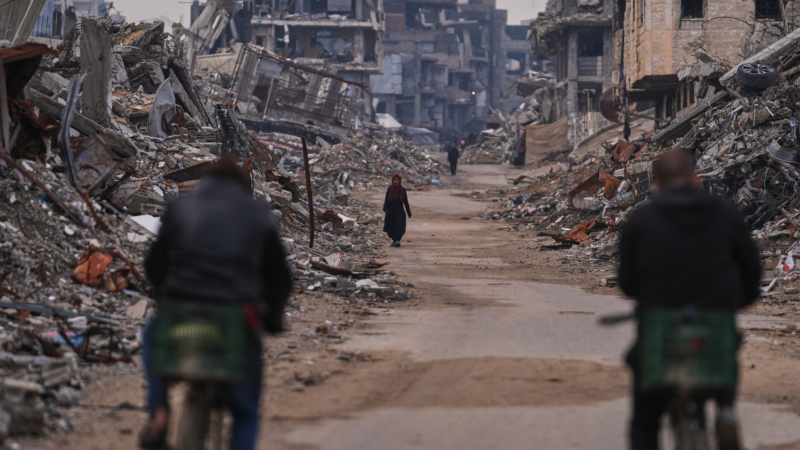Why America’s giant bunker-busting bombs may have failed to reach their target
The infographics were everywhere in the run-up to Sunday’s early-morning strike on Iran’s nuclear facilities by American stealth bombers.
They depicted America’s bunker-busting bomb, known as the Massive Ordnance Penetrator or GBU-57. It was being dropped from high above the Earth by a B-2 Spirit bomber. Then, the graphics showed it plowing a narrow channel deep beneath the ground — around 60 meters, or 200 feet — and erupting in an illustrated explosion.
Only America had this 30,000-pound weapon. Only America could hit Iran’s most deeply buried uranium enrichment site at a place called Fordo. It was buried beneath nearly 90 meters (around 300 feet) of rock, far deeper than Israeli bombs could penetrate.
There was only one problem — I wasn’t entirely sure it would work.
Now it appears it may not have. According to a still-classified assessment by the Defense Intelligence Agency, the bombs did not “obliterate” Iran’s Fordo enrichment site as President Trump claimed. Instead, the strike did only limited damage to the advanced centrifuges kept there. At most, the program was set back “a few months,” according to a U.S. official who confirmed the assessment’s existence to NPR but remained anonymous because they were not authorized to speak to the press.
The White House disputes that claim.
“The leaking of this alleged assessment is a clear attempt to demean President Trump,” White House press secretary Karoline Leavitt said on the social media platform X. “Everyone knows what happens when you drop fourteen 30,000 pound bombs perfectly on their targets: total obliteration.”
Well … not necessarily.
Decades ago, I covered another effort to create a powerful Earth-penetrating weapon. In the aftermath of September 11, with an eye towards the caves of Afghanistan, where Osama Bin Laden was believed to be hiding, then-President George W. Bush’s administration looked at whether a nuclear weapon could be dropped from a plane into the ground. The Robust Nuclear Earth Penetrator, as the concept was known, would deliver a powerful shock to underground tunnels and bunkers.
But when scientists got involved, they found there was no way to get a nuclear weapon nearly deep enough to contain the blast and radioactive fallout, and the program was eventually abandoned.
I went back to take a look at the math from those early studies, and I found it actually was fairly straightforward. The so-called “penetration equations” have existed since the 1960s and depend on a limited number of factors including the shape of the nosecone, the weight and diameter of the weapon, the speed at which it hits the ground, and — crucially — the type of earth it gets dropped on.
“It depends enormously on the kind of rock,” says Raymond Jeanloz, a professor at the University of California at Berkley and one of the original authors of the 2005 National Academies Study on earth penetrators.
When I ran the calculations, using a key equation from that study, I found out that the GBU-57 could go up to 80 meters (262 feet) underground if it was dropped in silty clay.
In medium-strength rock, things looked far different. The GBU-57 could only go around 7.9 meters (about 25 feet) beneath the earth — far short of the 60 meters claimed by the infographics.
This may be an important part of the reason the weapon failed to destroy its target — if indeed the bombs did fail as the DIA assessment claims.
Jeanloz says that it’s not just the strength of the rock. Changes in the geologic structure can also cause the bomb to change direction even as it moves through the Earth.
“If there’s any variations … including fractures or gaps, that can deflect the trajectory into the ground,” he says. Those same variations can disperse any blast from the bomb.
It’s clear that American planners were aware of these kinds of challenges. Rather than dispatching one or two GBU-57s, they sent 12 to drop on Fordo. Based on satellite imagery, it looks like they may have been dropped in pairs, with the first weapon fracturing the rock to increase the penetrating depth of the second. The bombers also appeared to target Fordo’s ventilation system, a possible weak point.
Loading…
The weapons likely created a powerful shockwave in the rock that would have travelled deep underground, rattling the facility below.
But Jeanloz says that those shockwaves weaken quickly as they move into the rock. Fordo’s position directly under the ridge of the mountain probably maximized that protection.
In fact, going deeper is a simple solution to the threat of bunker-busters. A major conclusion from the 2005 study was: “It’s cheaper and easier for someone to dig deeper than it is to penetrate through that depth,” he says.
Geology, it turns out, may have foiled one of the most audacious American air operations in recent memory.
NPR’s Tom Bowman contributed to this report.
Judge orders Trump administration to continue to seek funding for the CFPB
The order is the latest in a complex legal battle over the fate of the Consumer Financial Protection Bureau, a watchdog agency.
In a year of steep challenges, there were still shining moments in global health
The Trump administration's deep cuts in U.S. foreign health aid had a devastating impact. Yet there were achievements of note in spite of it all.
An escalation in Yemen threatens to reignite civil war and widen tensions in the Gulf
Saudi Arabia bombed Yemen's port city of Mukalla, targeting a shipment of weapons from the United Arab Emirates for separatist forces. The UAE later said it would withdraw its forces from Yemen.
Cecilia Giménez, the artist who ‘restored’ the face of Jesus, has died at 94
Giménez international attention after she attempted to restore an old fresco. While it was immediately ridiculed at the time, the piece eventually turned into a tourist attraction.
What being around death taught this hospital chaplain about life
J.S. Park helps patients and their families cope with death every day as a hospital chaplain. He explains what to expect as a person is dying, and how to reckon with uncomfortable feelings about death.
Israel says it will bar aid groups, including Doctors Without Borders, from Gaza
Israel accused Doctors Without Borders, one of the largest health organizations operating in Gaza, of failing to clarify the roles of some staff that Israel accused of cooperation with militants.







